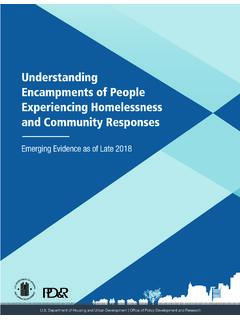Transcription of Understanding Digital Signal Processing - pearsoncmg.com
1 Understanding DigitalSignal Processing Third EditionThis page intentionally left blank Understanding DigitalSignal Processing Third EditionRichard G. LyonsUpper Saddle River, NJ Boston Indianapolis San FranciscoNew York Toronto Montreal London Munich Paris MadridCapetown Sydney Tokyo Singapore Mexico CityMany of the designations used by manufacturers and sellers to distinguish their products are claimed as trade-marks. Where those designations appear in this book, and the publisher was aware of a trademark claim, thedesignations have been printed with initial capital letters or in all author and publisher have taken care in the preparation of this book, but make no expressed or implied war-ranty of any kind and assume no responsibility for errors or omissions. No liability is assumed for incidental or con-sequential damages in connection with or arising out of the use of the information or programs contained publisher offers excellent discounts on this book when ordered in quantity for bulk purchases or specialsales, which may include electronic versions and/or custom covers and content particular to your business,training goals, marketing focus, and branding interests.
2 For more information, please Corporate and government Sales(800) sales outside the United States please contact:International us on the Web: of Congress Cataloging-in-Publication DataLyons, Richard G., 1948- Understanding Digital Signal Processing / Richard G. Lyons. 3rd bibliographical references and 0-13-702741-9 (hardcover : alk. paper) Processing Digital '2 dc222010035407 Copyright 2011 Pearson Education, rights reserved. Printed in the United States of America. This publication is protected by copyright, and per-mission must be obtained from the publisher prior to any prohibited reproduction, storage in a retrieval system,or transmission in any form or by any means, electronic, mechanical, photocopying, recording, or likewise. Toobtain permission to use material from this work, please submit a written request to Pearson Education, Inc.,Permissions Department, One Lake Street Upper Saddle River, New Jersey 07458, or you may fax your requestto (201) : 978-0-13-702741-5 ISBN-10: 0-13-702741-9 Text printed in the United States on recycled paper at Edwards Brothers in Ann Arbor, printing, August 2012I dedicate this book to my daughters, Julie and Meredith I wish Icould go with you; to my mother, Ruth, for making me finish myhomework; to my father, Grady, who didn t know what he startedwhen he built that workbench in the basement; to my brother Rayfor improving us all; to my brother Ken who succeeded where Ifailed; to my sister Nancy for running interference for us; and to theskilled folks on the USENET newsgroup They ask the goodquestions and provide the best answers.
3 Finally, to Sigi Pardula (Bat-girl): Without your keeping the place running, this book wouldn page intentionally left blank ContentsPREFACE xvABOUT THE AUTHOR xxiii1 DISCRETE SEQUENCES AND SYSTEMS Sequences and Their Amplitude, Magnitude, Processing Operational to Discrete Linear Time-Invariant Linear Commutative Property of Linear Time-Invariant Linear Time-Invariant Systems19 References21 Chapter 1 Problems232 PERIODIC SAMPLING : Signal Ambiguity in the Frequency Lowpass Bandpass Aspects of Bandpass Sampling45 References49 Chapter 2 Problems503 THE DISCRETE FOURIER TRANSFORM the DFT Frequency Shifting Scalloping Resolution, Zero Padding, and Frequency-Domain Processing DFT of Rectangular the DFT Using the Discrete-Time Fourier Transform120 References124 Chapter 3 Problems1254 THE FAST FOURIER TRANSFORM of the FFT to the on Using FFTs in of the Radix-2 FFT Input/Output Data Index Bit FFT Butterfly Single-Butterfly Structures154 References158 Chapter 4 Problems1605 FINITE IMPULSE RESPONSE FILTERS Introduction to Finite Impulse Response (FIR)
4 In FIR FIR Filter FIR Filter FIR Filter Exchange FIR Filter Design FIR Response of FIR Generic Description of Discrete FIR Filters226 References235 Chapter 5 Problems2386 INFINITE IMPULSE RESPONSE FILTERS Introduction to Infinite Impulse Response Laplace the z-Transform to Analyze IIR Poles and Zeros to Analyze IIR IIR Filter in Building IIR IIR Filters with Cascaded the Gain of IIR Invariance IIR Filter Design Transform IIR Filter Design IIR Filter Design Brief Comparison of IIR and FIR Filters332 References333 Chapter 6 Problems3367 SPECIALIZED Digital NETWORKS AND FILTERS Lowpass FIR Sampling Filters: The Lost Art392 References426 Chapter 7 Problems4298 QUADRATURE SIGNALS Care about Quadrature Signals? Notation of Complex Real Signals Using Complex Few Thoughts on Negative Signals in the Frequency Quadrature Signals in the Frequency Complex Down-Conversion Alternate Down-Conversion Method462 References464 Chapter 8 Problems4659 THE DISCRETE HILBERT TRANSFORM Transform Care about the Hilbert Transform?
5 Response of a Hilbert a Discrete Hilbert Analytic Signal Analytical Signal Generation Methods497 References498 Chapter 9 Problems49910 SAMPLE RATE of of Decimation and Analysis of Multirate Filter Rate Conversion by Rational Rate Conversion with Half-band Rate Conversion with IFIR Integrator-Comb Filters550 References566 Chapter 10 Problems568xContents11 Signal Multiple Fast Fourier Phase Aspects of Time-Domain Averaging608 References615 Chapter 11 Problems61712 Digital DATA FORMATS AND THEIR Binary Number Precision and Dynamic of Finite Fixed-Point Binary Word Binary Floating-Point Binary Format658 References658 Chapter 12 Problems66113 Digital Signal Processing Translation without Vector Magnitude Multiplication of Complex Performing the FFT of Real the Inverse FFT Using the Forward FIR Filter Structure A/D Converter Quantization Converter Testing FIR Filtering Using the Normally Distributed Random FIR a Bandpass Peak Location FFT Twiddle Tone Sliding Zoom Practical Spectrum Efficient Arctangent Demodulation Traditional CIC Impulsive Polynomial Very High-Order FIR Interpolation Using the Translation Using Gain Control (AGC)
6 Envelope Quadrature Exponential Narrowband Noise Using Filter Computation of Signal Computation of Signal Averages and Hilbert Transformers from Half-band Vector Rotation with Efficient Differentiating DC-Removal Overflow in Magnitude Linear Complex Down-conversion Transition Flipping around Signal Center Missing Signal Large DFTs Using Small FFTs Filter Group Delay without a Forward and Inverse FFT Using a Single Narrowband Lowpass IIR Stable Goertzel Algorithm838 References840xiiContentsA THE ARITHMETIC OF COMPLEX Representation of Real and Complex Representation of Complex Operations of Complex Practical Implications of Using Complex Numbers856B CLOSED FORM OF A GEOMETRIC SERIES859C TIME REVERSAL AND THE DFT 863D MEAN, VARIANCE, AND STANDARD of Short of Summed Deviation (RMS) of a Continuous Signal -to-Noise Mean and Variance of Random Normal Probability Density Function882E DECIBELS (DB AND DBM) Logarithms to Determine Relative Signal Useful Decibel Power Using Decibels 891F Digital FILTER TERMINOLOGY 893G FREQUENCY SAMPLING FILTER DERIVATIONS Response of a Comb Complex FSF Frequency Complex FSF Complex FSF Frequency FSF Transfer FSF Frequency Response910H FREQUENCY SAMPLING FILTER DESIGN TABLES 913I COMPUTING CHEBYSHEV WINDOW SEQUENCES Windows for FIR Filter Windows for Spectrum Analysis929 INDEX931xivContentsPrefaceThis book is an expansion of previous editions of Understanding Digital those earlier editions, its goals are (1) to help beginning stu-dents understand the theory of Digital Signal Processing (DSP) and (2)
7 To pro-vide practical DSP information, not found in other books, to help workingengineers/scientists design and test their Signal Processing systems. Eachchapter of this book contains new information beyond that provided in ear-lier s traditional at this point in the preface of a DSP textbook for the au-thor to tell readers why they should learn DSP. I don t need to tell you howimportant DSP is in our modern engineering world. You already know ll just say that the future of electronics is DSP, and with this book you willnot be left INSTRUCTORSThis third edition is appropriate as the text for a one- or two-semester under-graduate course in DSP. It follows the DSP material I cover in my corporatetraining activities and a Signal Processing course I taught at the University ofCalifornia Santa Cruz Extension. To aid students in their efforts to learn DSP,this third edition provides additional explanations and examples to increaseits tutorial value.
8 To test a student s Understanding of the material, home-work problems have been included at the end of each chapter. (For qualifiedinstructors, a Solutions Manual is available from Prentice Hall.)xvFOR PRACTICING ENGINEERSTo help working DSP engineers, the changes in this third edition include, butare not limited to, the following: Practical guidance in building discrete differentiators, integrators, andmatched filters Descriptions of statistical measures of signals, variance reduction byway of averaging, and techniques for computing real-world Signal -to-noise ratios (SNRs) A significantly expanded chapter on sample rate conversion (multiratesystems) and its associated filtering Implementing fast convolution (FIR filtering in the frequency domain) IIR filter scaling Enhanced material covering techniques for analyzing the behavior andperformance of Digital filters Expanded descriptions of industry-standard binary number formatsused in modern Processing systems Numerous additions to the popular Digital Signal Processing Tricks chapterFOR STUDENTSL earning the fundamentals, and how to speak the language, of Digital signalprocessing does not require profound analytical skills or an extensive back-ground in mathematics.
9 All you need is a little experience with elementary al-gebra, knowledge of what a sinewave is, this book, and enthusiasm. This maysound hard to believe, particularly if you ve just flipped through the pages ofthis book and seen figures and equations that look rather complicated. Thecontent here, you say, looks suspiciously like material in technical journalsand textbooks whose meaning has eluded you in the past. Well, this is not justanother book on Digital Signal this book I provide a gentle, but thorough, explanation of the theoryand practice of DSP. The text is not written so that you mayunderstand the ma-terial, but so that you mustunderstand the material. I ve attempted to avoid thetraditional instructor student relationship and have tried to make reading thisbook seem like talking to a friend while walking in the park. I ve used justenough mathematics to help you develop a fundamental Understanding of DSPtheory and have illustrated that theory with practical have designed the homework problems to be more than mere exercisesthat assign values to variables for the student to plug into some equation inorder to compute a result.
10 Instead, the homework problems are designed toxviPrefacebe as educational as possible in the sense of expanding on and enabling fur-ther investigation of specific aspects of DSP topics covered in the text. Stateddifferently, the homework problems are not designed to induce death by al-gebra, but rather to improve your Understanding of DSP. Solving the prob-lems helps you become proactive in your own DSP education instead ofmerely being an inactive recipient of DSP JOURNEYL earning Digital Signal Processing is not something you accomplish; it s ajourney you take. When you gain an Understanding of one topic, questionsarise that cause you to investigate some other facet of Digital Signal process-ing. Armed with more knowledge, you re likely to begin exploring furtheraspects of Digital Signal Processing much like those shown in the diagram onpage xviii. This book is your tour guide during the first steps of your don t need a computer to learn the material in this book, but itwould certainly help.
















